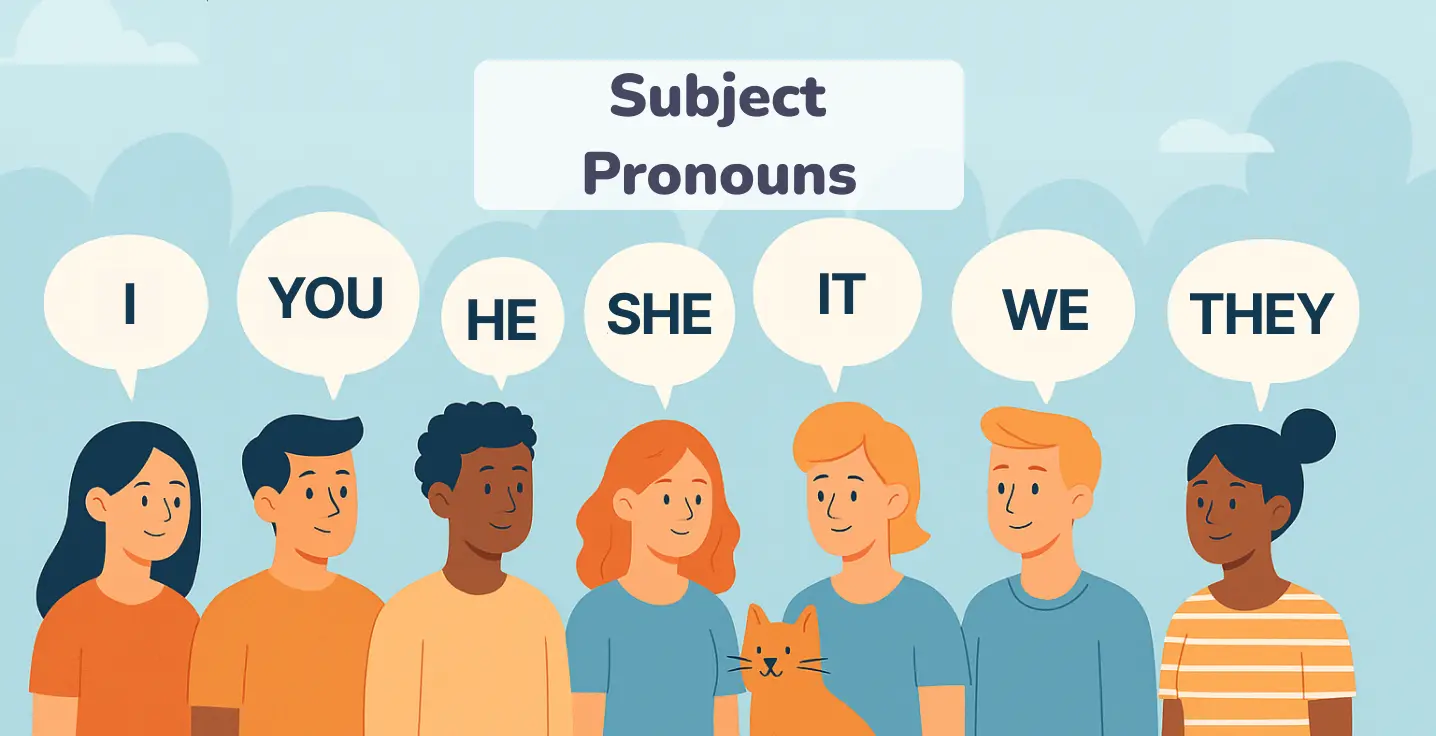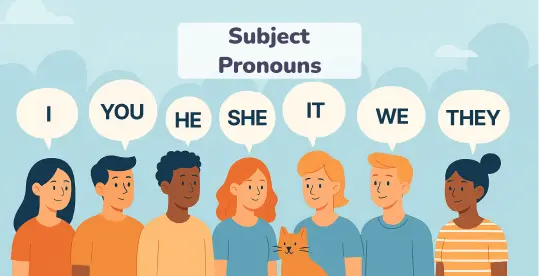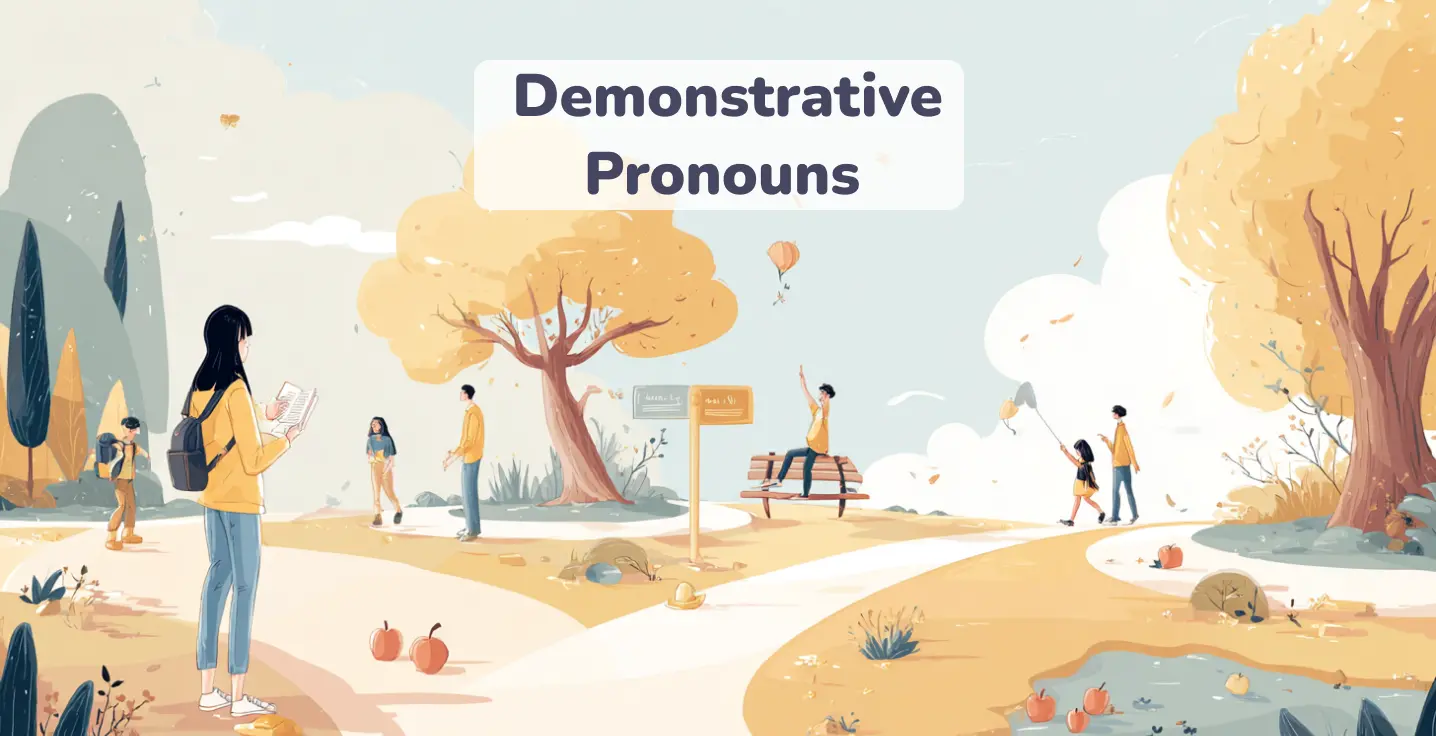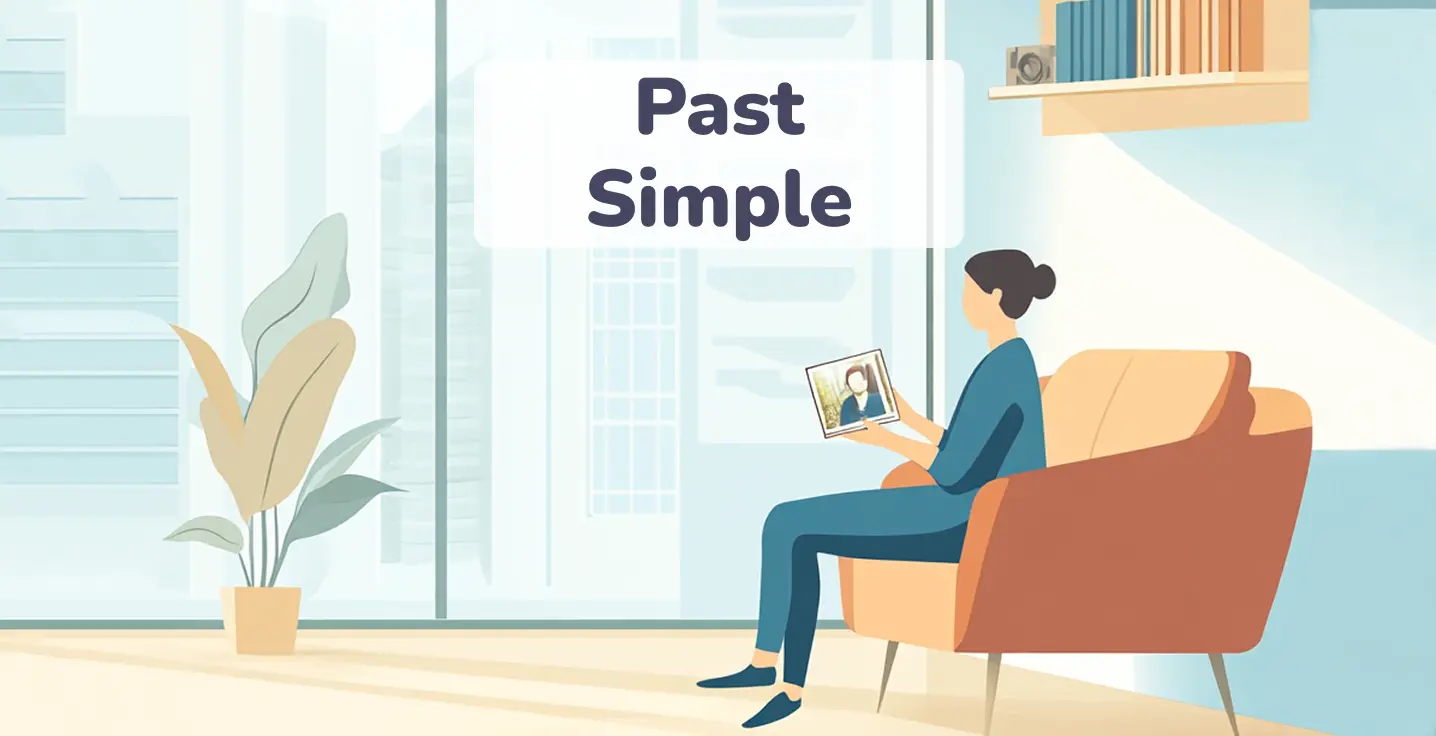What is a subject pronoun?
Words that we use to replace nouns that perform some actions are called subject pronouns. The subject pronouns definition is simple to understand, as it is the basic point in learning English and becoming fluent.
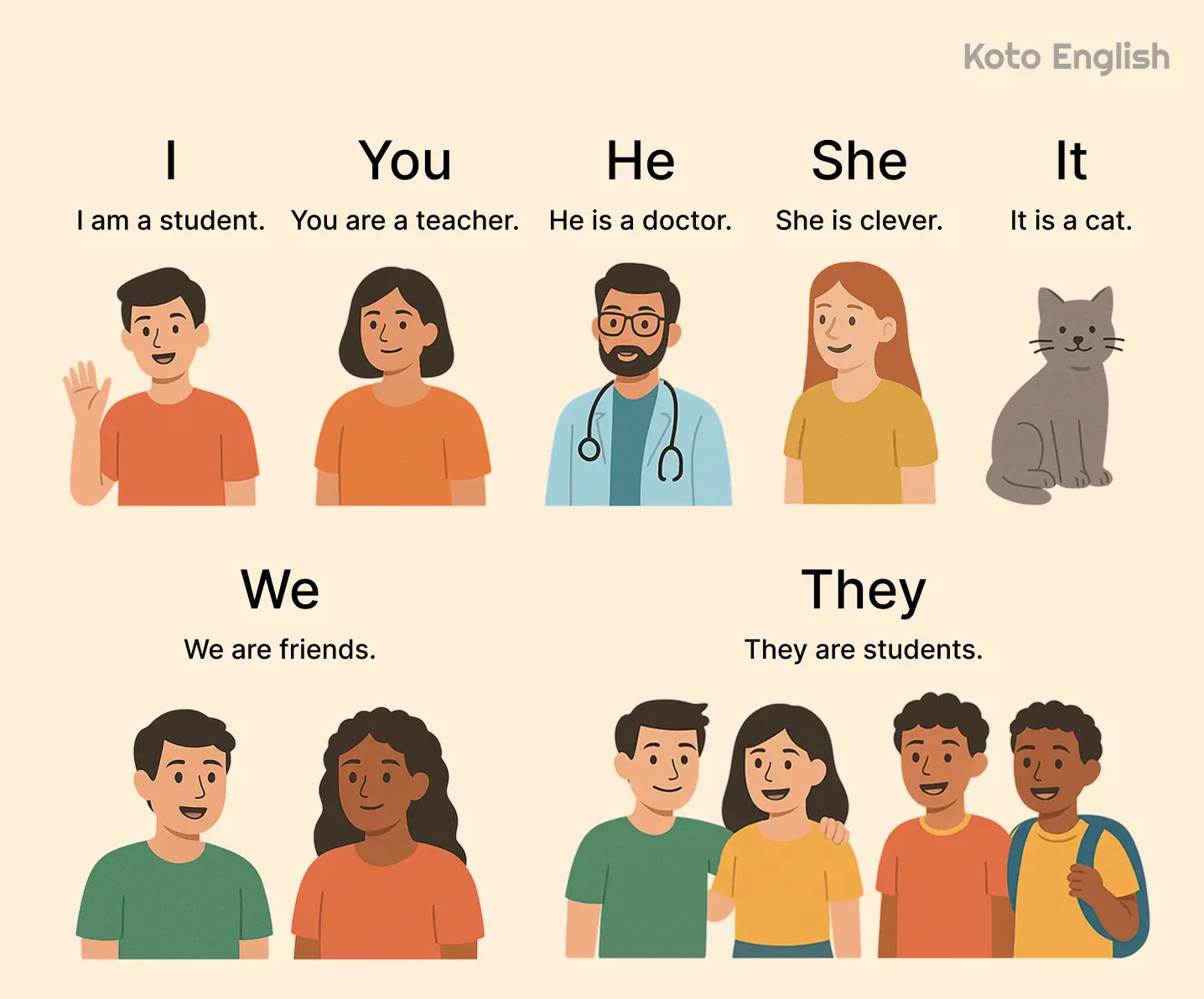
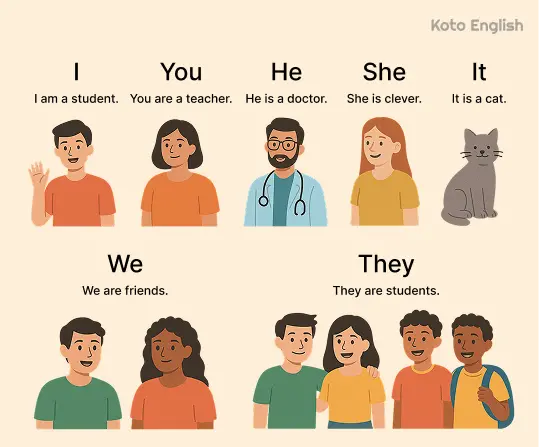
There are 7 subject pronouns in the English language:
- I
- You
- We
- She
- He
- They
- It
They have a clear goal — to help you avoid repetition when you indicate who or what does something, as it makes your speech more common and natural for native speakers. With this grammar, you will build a foundation for further learning so that it will be easier for you to move on to more challenging topics. With this list of subject pronouns, you make the text smoother, for example:
| Before | After |
|---|---|
| |
Brian is my closest friend. I met |
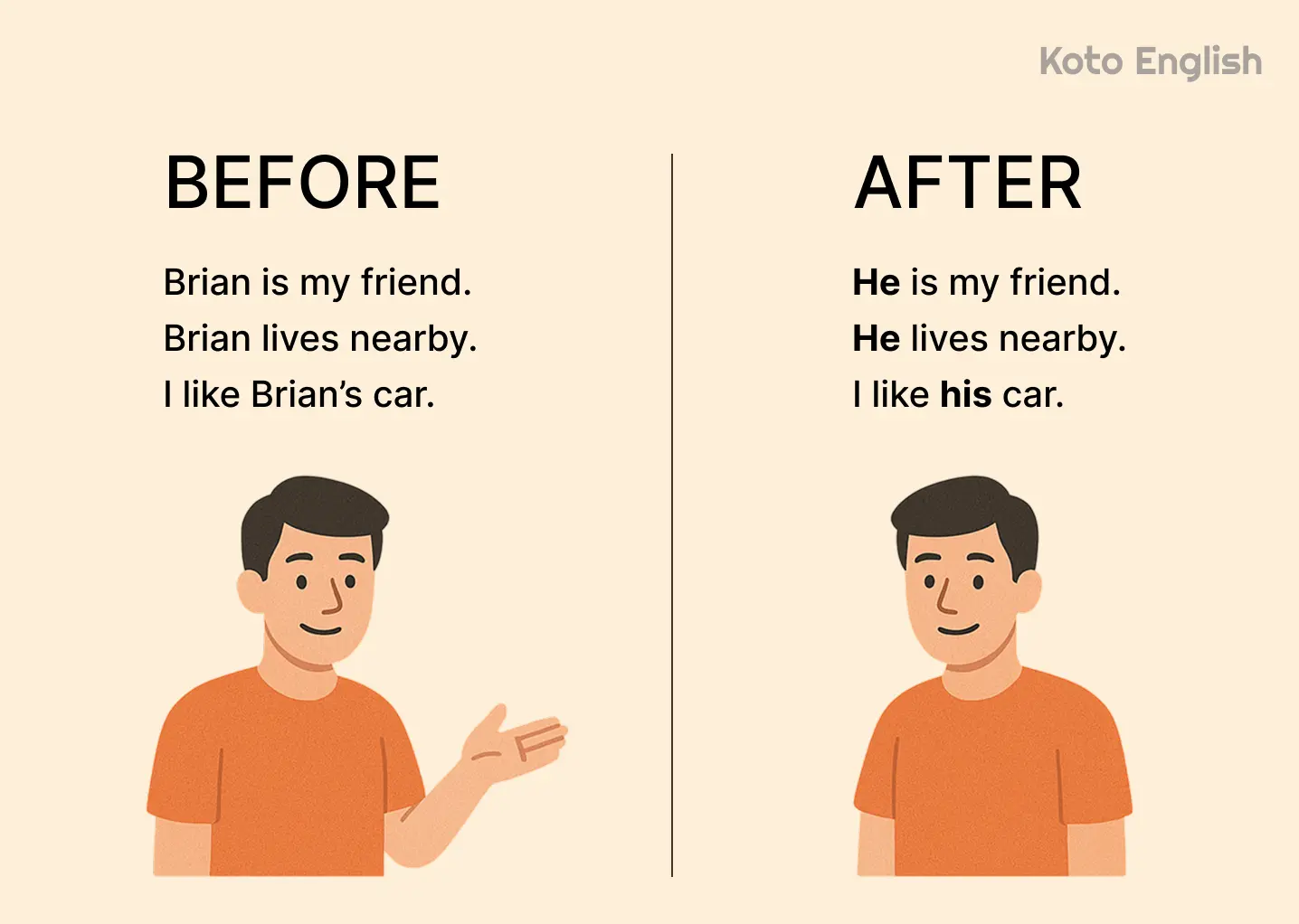
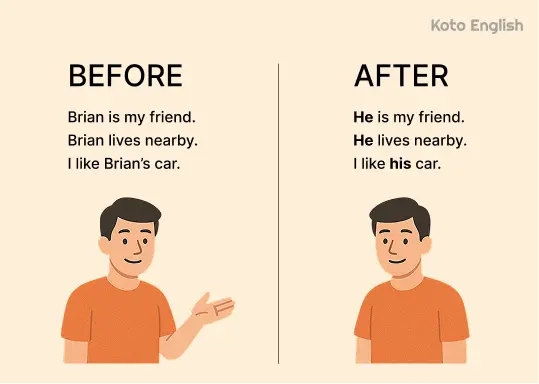
Below, you will study the ways to put them in real-world sentences and additional actions that are typical for daily conversations and even work-related communication.
Level up your English with Koto!
When to use them correctly?
As you have answered your question, “What are subject pronouns?” let’s move to another point — when to put them in sentences, with simple explanations. Here are some common rules that will be useful:
-
Start your phrase with a pronoun. You need to show that something or someone is doing the action:
She speaks Korean like a native!I like my cat a lot.He is a cutie. -
Replace names. As we have done above, you are able to avoid repeating:
I know Maria.She is my classmate.I can do it, James.You are my fiancé! -
Talk about things. You can point to a thing with the pronoun it:
It is a laptop for school.I don’t like this weather.It is so rainy. -
Describe with adjectives. Talking about humans or others, you can use subject pronouns in English:
We are so happy now.He is fine and tall.
Now, you know how to build a correct sentence with a full understanding of its usage, so it’s time to define its agreement with other speech parts, provide more real-life examples, etc.
How to use subject pronouns?
Let’s check some examples of how to use these words in the real world, so that you can be more confident in communicating with other learners and native speakers. First of all, the main purpose of this pronoun is to indicate who or what does something, and keeping that in mind, let’s define the use cases:
| Pronoun | Example | Case |
|---|---|---|
| I |
|
Used by the one who is speaking |
| You |
|
Talking to another person or more than two humans |
| We |
|
Used by two persons |
| She |
|
Talking to a woman (singular) |
| He |
|
Talking to a man (singular) |
| They |
|
Talking about a group of people |
| It |
|
Referring to a thing or an animal (when you don’t know the gender) |
As you learnt about the implementations, let’s move on to more examples that take place in our guide.
Examples of the subject pronoun
The top way to dive into the subject pronoun definition is to use samples where its functions are shown, and practice more. Here, you can check the sentences our methodology experts prepared based on their experience in teaching English:
Singular
They are used when you name or refer to one thing, person, or animal, showing through the sentence that they are doing something.
| Pronoun | Example |
|---|---|
| I |
|
|
|
|
| She |
|
|
|
|
| He |
|
|
|
|
| They |
|
|
|
|
| It |
|
|
|
Singular and plural
The subject pronoun meaning of you can do both and point out one person (both formal and informal), and a group of people as well. You will distinguish them in a context.
| Pronoun | Example |
|---|---|
| You |
|
|
Both of
|
Plural
Talking about two or more people makes you use the plural form, for example, if it is about you and your friend performing an action.
| Pronoun | Example |
|---|---|
| We |
|
|
|
|
| They |
|
|
|
You familiarized yourself with subject pronouns examples speakers use daily and illustrated the actual function of these words instead of dry grammar. We would like to keep going with this approach and provide you with more valuable skills.
Common mistakes to avoid
No one can be a 100% learner from the start, as they make mistakes you can define and stay away from in the future. You will read about the most typical challenges that can be encountered when studying the subject pronouns list actively for you to build confidence in the process and not be afraid of challenges.
Baffling object and subject types
It is a typical example of misunderstanding that comes with learners who have just begun their way to fluency. Remember to use the subject when it does an action, and the object when it is under the action.
|
Me like eating out with friends.
|
I like eating out with friends.
|
|
We saw she in a countryside village.
|
We saw her in a countryside village.
|
Setting “It” wrongly
Sometimes, speakers can use the pronoun it when talking not about animals (when they don’t know their gender) or things, but also about humans. Here are subject pronoun examples for more understanding:
|
It is my mom, Helena.
|
She is my mom, Helena.
|
|
It is my cousin I have never met.
|
He is my cousin I have never met.
|
Using me instead of I
Such a confusing point is related to the first one — you need to remember that “I” is used when you are doing an action, while “me” indicates that you are under the action. Here is how it works:
|
Me live in this flat over there.
|
I live in this flat over there.
|
|
Me am writing a book.
|
I am writing a book.
|
These mistakes are made by native speakers as well, so now you are aware of them and will avoid them while talking or writing, preparing for your exam, or else.
Summary and actionable tips
You learnt a plethora of examples of subject pronouns and are aware of their usage in various forms and situations. For now, you can be confident in using them when communicating through face-to-face conversations or chats, and don’t worry about possible mistakes. Follow the tips we provided above, and stay tuned for more guides from Koto!
Enjoy personalized learning!
Subject Pronouns FAQ
The ones that replace nouns in sentences — whether it is a speech or chat — are called the subject pronouns, and there are seven kinds of them for you to learn. Here is a brief review of each of them for you to gain a convenient understanding:
- I, for the first person:
I love being a student - You, for the second person:
You are such a great woman! - He/she for the third person: No way
he did this! /She is a calm girl - It is for the third person (singular): Look at this cat!
It is grey! - We, for the first person (plural):
We are talking to you now. - They, for the third person (plural):
They will paint this house.
The daunting part of this question is about the need to recognize which pronoun to use, as learners may say, “I saw he,” and it will be a wrong, unnatural usage. The core contrast is displayed in this short comparison table, powered by examples of a subject pronoun:
| Type | Usage | Example |
|---|---|---|
| Subject | Comes before a verb and is used for a pronoun that performs an action |
|
| Object | Comes after a verb and is used for a pronoun that receives an action |
I met
He gave it to
|
Yes, and it makes a challenging moment in learning English for newcomers as they need to understand the context behind this pronoun. Still, here is a simple way to differentiate if someone talks to or about one person or a group of people: detect indications.
Here, you can pay attention to words like all and both, which definitely refer to the plural form, and prepositions like a or an, which are used for the singular.
Example:
You all are adults with responsibilities — all for plural
You are a teacher, my dear — a for singular
By focusing on the atmosphere of a situation that happens in a text or real life, you will be able to define which form to use and which form is used, especially when it’s face-to-face communication.
Yes, they can. The usage of “it” is also correct, for example, when you don’t know the gender of an animal, so you say:
However, if you talk about a creature that you know, you are able to say:
If you have doubts about which pronoun to use in conversation, don’t hesitate to ask a pet parent about the animal’s sex.
The short answer is, “It depends on the context.” The discussion about a thing called “conversational deletion” states that people can leave out pronouns that indicate subjects when they are pretty close and speak informally.
Talking or messaging with your friend, you can say, “Going home” instead of “I am going home,” and that will be fine, as it is basically faster to type or pronounce. The pro tip is to rely on the specifics of a situation and formal atmosphere.



